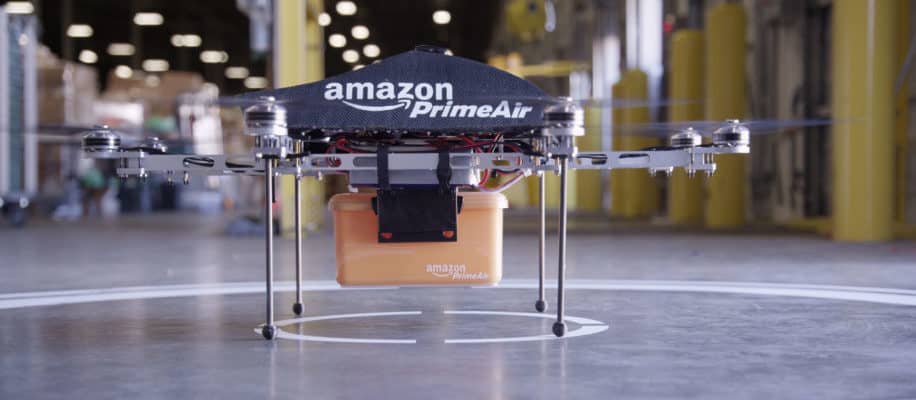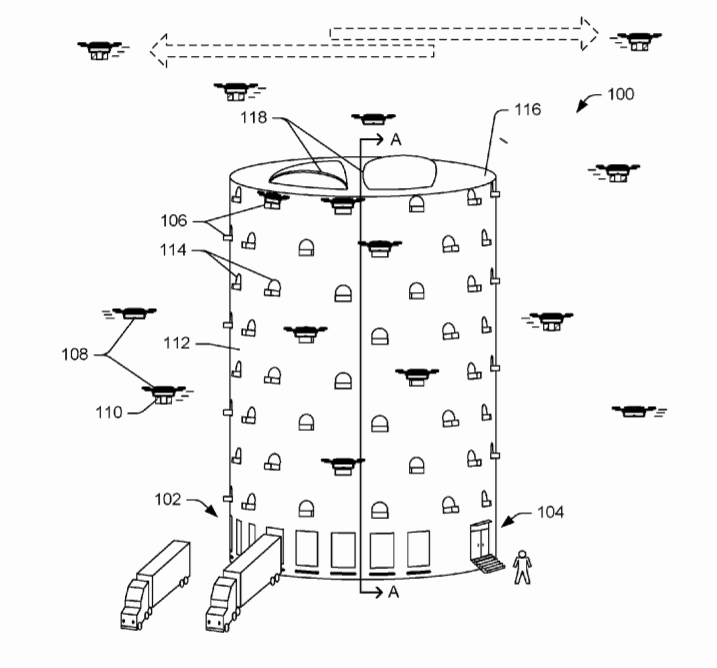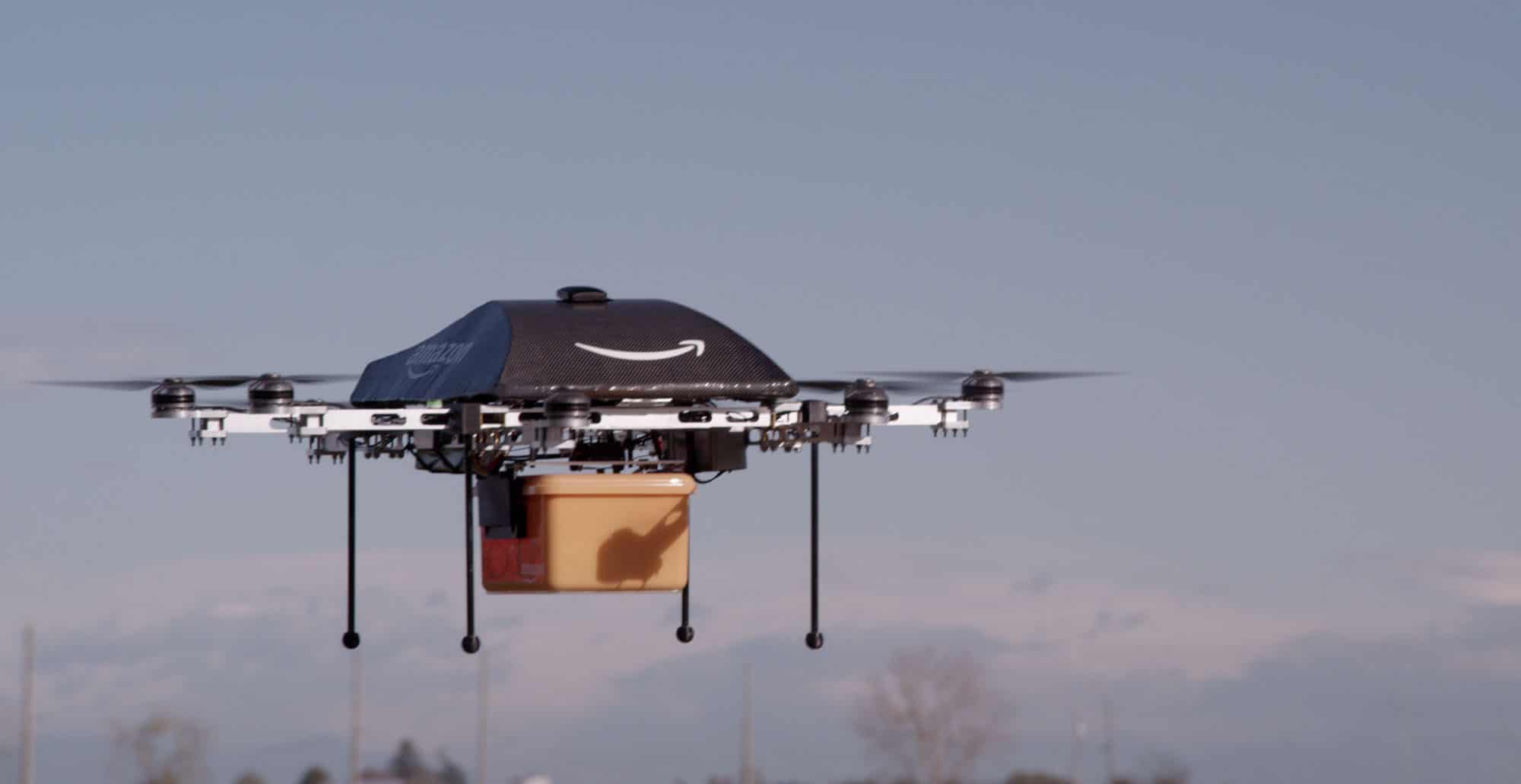Mail in flight a la Harry Potter. Amazon has been working on the delivery of packages by drone for some time. But "Prime Air", as the flying delivery service is called, is still in the test phase. However, thanks to a newly registered patent, it is possible to guess where Amazon sees the Prime Air model in the future.
From bookseller to beekeeper
It's been almost a year since Amazon completed its first drone delivery. However, the flight that took off on December 07th, 2016, like all subsequent flights, was purely a test flight. Amazon still has a long way to go to become a mass market application. But even if our order doesn't fall on our heads from above, one can guess what the future of delivery services could look like. A recently registered patent for the former bookshop provides this insight. Here, however, the language is not of the drones themselves, but mainly of their nests. That's right - drone nests.
You can access the original document of the patent here.
Amazon's project can be best explained in the figure above. While nothing spectacular happens below, the spotlight is on the upper floors. The vertical column is traversed by small gates, which serve as entry and exit points for the drones.
However, these are by no means constantly open, but use a chip integrated in the drones to recognize when they need to open and close. As expected, there is little manual labor inside the logistics center of the future. Robots ensure the correct distribution of the shipments to the drones. What the oversized beehive looks like from the inside remains unclear. At this point, let's lean out the window and claim: Amazon hasn't planned that far here yet.
Despite or perhaps because of all the robotic power inside and outside the tower, Amazon considers the ground floor of the tower to be rather old-school. Some truck gates for delivery and – actually – a person are easily recognizable. Even if this hardly represents the original number of employees per drone nest, it does represent a certain ratio. Because in the tower, the robots will clearly play the leading role. Only the monitoring is still in the hands of humans.
Crazy patents as far as the eye can see
Amazon's drone nest idea wasn't the first to draw attention. Amazon had already tried to solve the logistics problems of the future with a different draft. Here, too, drones were used for delivery. The difference? Instead of a large nest of drones, Amazon planned a flying warehouse. And yes, you heard that right here too. A Warehouse - 13km above your city.
Smaller shuttles are to deliver packages to the constantly hovering Amazon mothership. If a delivery address is within a suitable radius, small, unmanned drones then deliver the packages delivered by the shuttles to the customer by gliding. However, the flying warehouse should not hover over any small town, but only over central metropolitan areas. This should make it easier to react to bottlenecks or a delivery within minutes as a kind of “The flying warehouse is in your city” action. Furthermore, the warehouse can be used for major sporting events or for advertising purposes. However, there were only a few details about the flying warehouse itself. However, the airship is said to be several hundred meters long and weigh a few tons.
Amazon and flying
The increased appearance of patents taken out of thin air by Amazon is neither due to Amazon's megalomania nor to an irrational vision of the future. Admittedly, perhaps Amazon CEO Bezos' interest in aerospace plays some role. Nevertheless, Amazon's flight to the top - be it a vertical hive of drones or flying itself - is not based on irrational fear. In the future, problems related to logistical issues will increase. Too many people mean too little space.
Huge warehouses have to be set up outside of metropolitan areas and entail longer and longer delivery routes. This is an enormous obstacle, especially with drone delivery, as technical difficulties and other costs accumulate with every additional meter of distance to be covered.
Similar to the concept of a skyscraper, Amazon tries to counteract the space problem with height. But other solutions such as underwater storage are also conceivable. You can find a list of all Amazon patents at CB Insights.
Of course, there is still a long way to go before we have standard drone deliveries and flying warehouses. And along the way, Amazon has more to fix than technical issues. Loud drones, security risks in the form of packages flying around or even an airship weighing hundreds of tons over a large city are just a few examples. However, the mail-order company does not lack one thing: ideas. Although possibly not with flying warehouses - Amazon will most likely help shape our future.











